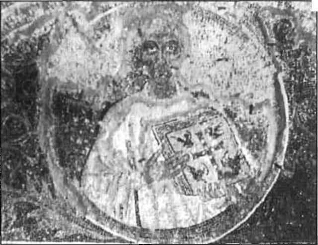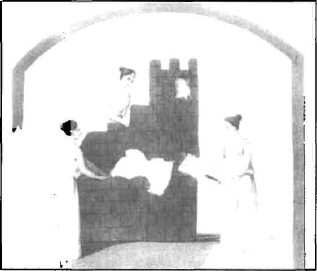Bitalia, The Ancient Woman Priest -- By: Catherine Clark Kroeger
Journal: Priscilla Papers
Volume: PP 07:1 (Winter 1993)
Article: Bitalia, The Ancient Woman Priest
Author: Catherine Clark Kroeger
Bitalia, The Ancient Woman Priest
Dr. Catherine Clark Kroeger, author of I SUFFER NOT A WOMAN (available from CBE), is an adjunct professor at Gordon-Conwell Theological Seminary, and President of CBE.


The CBE study group was stumping along yet another dusty corridor lined with grace openings in the Catacomb of San Gennaro on the outskirts of Naples. I, for one, was growing discouraged. We had heard rumors that there was a fresco here of an early woman priest, but it appeared to be only a rumor.
True, we had seen wall paintings that would have filled us with glee in other circumstances. Among the paintings of other bishops, we had seen the portrait of Quodvultdeus (what God wills), an African who assumed the episcopal seat of Naples in approximately A.D. 439. Exiled by the invading Vandal king, this man of God had fled from Carthage to Southern Italy, where the Christian community prized his spiritual leadership and made him their bishop. Illustration no. 1 shows Quodvultdeus, dark skinned and surrounded by African floral motifs. In his hand he holds the Scriptures as he proclaims the Word of God to the flock. But while black bishop of Naples was very exciting, couldn’t we also find the woman priest?
We had peered up at an elaborately painted ceiling and seen there three women building a church. Illustration no. 2 reproduces a line drawing (the damaged original photographs poorly). They carry bricks and build them into the tower. One woman brings bricks from the river mud, another prepares the mortar, and the third carefully lays the bricks into the structure. No doubt about their hands-on involvement!
The inspiration for this ceiling appears to come from the ancient Christian writing Shepherd of Hermas and dates the work to the third century. In the Shepherd, twelve women, representing twelve virtues, are at work upon the building. Why has the number been reduced three? Other descriptions in the Shepherd feature men at work building, rather than women. Why were the women selected here? Surely one answer is that actual women depicted were active and influential in the Christian community at Naples. But still, was there no woman priest?
The guide-archaeologist pulled back a rope and commented that we were entering a part of the catacomb not ordinarily open to visitors. Now there were no paintings at all on the walls, and things looked even less promising. But suddenly the guide shone his flashlight upon a wall and started to explain. “We must not say that this woman was necessarily a priest,” he announced, “but surely she occupied a position of great importance in the congregation. We know this because of the prominen...
Click here to subscribe
